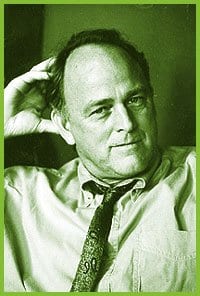We all believed it. When I was a child in the 1950s playing at Hide and Seek and Run Chief Run, there was a myth in our neighbourhood about a street just three blocks over. Island Park Drive. This was the street where “successful” people lived and where the years unfolded as they should, because, well, these people had it all.
The houses, well beyond the edge of the curb, were varied but always large, sitting grandly on treed lots. In these homes, fathers, mothers and children lived golden lives, were happy and healthy. If there was ever the equivalent of TV sitcoms, such as Father Knows Best, in the mindset of our community, Island Park Drive was it. Just like the ’50s TV viewers, we bought into the familial storyline hook, line and sinker.
These days, I find myself asking if we in the gay and lesbian community have not done the same thing? Have we bought into the myth of “the union of two people to the exclusion of all others,” the idea of “first comes love, then comes marriage and then comes the baby carriage” as we used to sing, teasing any friend who had developed a crush on someone?
The thing we later learned about those Island Park Drive families is that they were just as prone to dysfunction and breakups as the households up and down our block. It hit us like a bolt out of the blue. How could this be when they had everything going for them? And yet, even when we accepted that they had problems, we then smugly felt they deserved it. They had failed in living up to the standards we had set for them.
Where are we, the gay and lesbian community, going? Is marriage really the last frontier in the community’s move into the mainstream? Is it as important as those leading the charge tell us it is?
I look around the gay and lesbian community and I see many single, unattached people – whether by choice or by happenstance. What does the right of marriage do for them? While those in the forefront say the right to marry is about equality and inclusion, it is also about exclusion (as the definition stresses). And doesn’t the definition play into the belief we were brought up in? That marriage and love are forever?
There was another myth in our neighbourhood about Island Park Drive. This one was insidious. It was, people said under their breath or behind closed doors, where some of “them” lived. “Them” were Jewish people whose parents and grandparents had come to Canada from Eastern Europe poor, who had scraped, saved and done well. Unlike the middle class Catholics and Protestants on our block who had to struggle to make ends meet. In reality, however, we were not badly off. What lay beneath this point of view was simple jealousy. And the fact that they were “other,” different from us. But the myth was how we divided the world in which we lived.
The Jewish families along Island Park Drive were barely distinguishable, except in religion. After all, they fell in love, married and had children like everyone else. Yet despite the fact that they shared this trait with others on their street and all the adjoining streets, it did not stop the whispers, the hateful discrimination.
Which brings me to my point – the recent debates in the House of Commons during that gay-filled week in September. Without a doubt, the hate crime legislation is, in my view (and I wager many others, both gay and straight), more important to everyone in the gay, lesbian, bisexual and transgender community than the right to marry. This bill is truly about inclusiveness.
It means that every one of us, whether single or coupled, can take action if there are written, verbal or physical attacks against us. If we in Canada, as we so love to claim, are a caring nation that works toward benefitting the society as a whole, than this legislation is a fine of example of that quality.
When I think back to my childhood, there was not only discrete antagonism amongst Christian and Jewish people, there was also upfront vocal dissension between Protestants and Catholics, fuelled by the belief that one faith had the take on what was right and virtuous. We like to believe that all this is behind us today.
Yet for many “right-thinking” (pun intended) religious people, gays and lesbians are the new target. They fear the legislation will reduce their sacred texts to hate literature. And so it should be, when it is used to justify inciting acts of oppression and suppression. Hasn’t our nation’s legislation on hate evolved over the past decades to include colour, race, religion and ethnic origin? Why not sexuality?
Sexuality, and how we use the body to express it, can be seen as a metaphor for Canadian society and this period of time in which are living. To include sexuality in our hate legislation is to suggest our society is more inclusive, more caring and protective.
Those opposed are expressing their fundamental religious fear of the human body. After all, if you take Christian mythology, the body is sinful and evil – thanks to Eve chowing down on that apple. In their way of thinking, it’s simple. There are two sides to sexuality – male and female, heterosexual and homosexual, marital and non-marital. For them, the formers are “normal,” and, therefore, should retain the rights of the privileged.

 Why you can trust Xtra
Why you can trust Xtra


